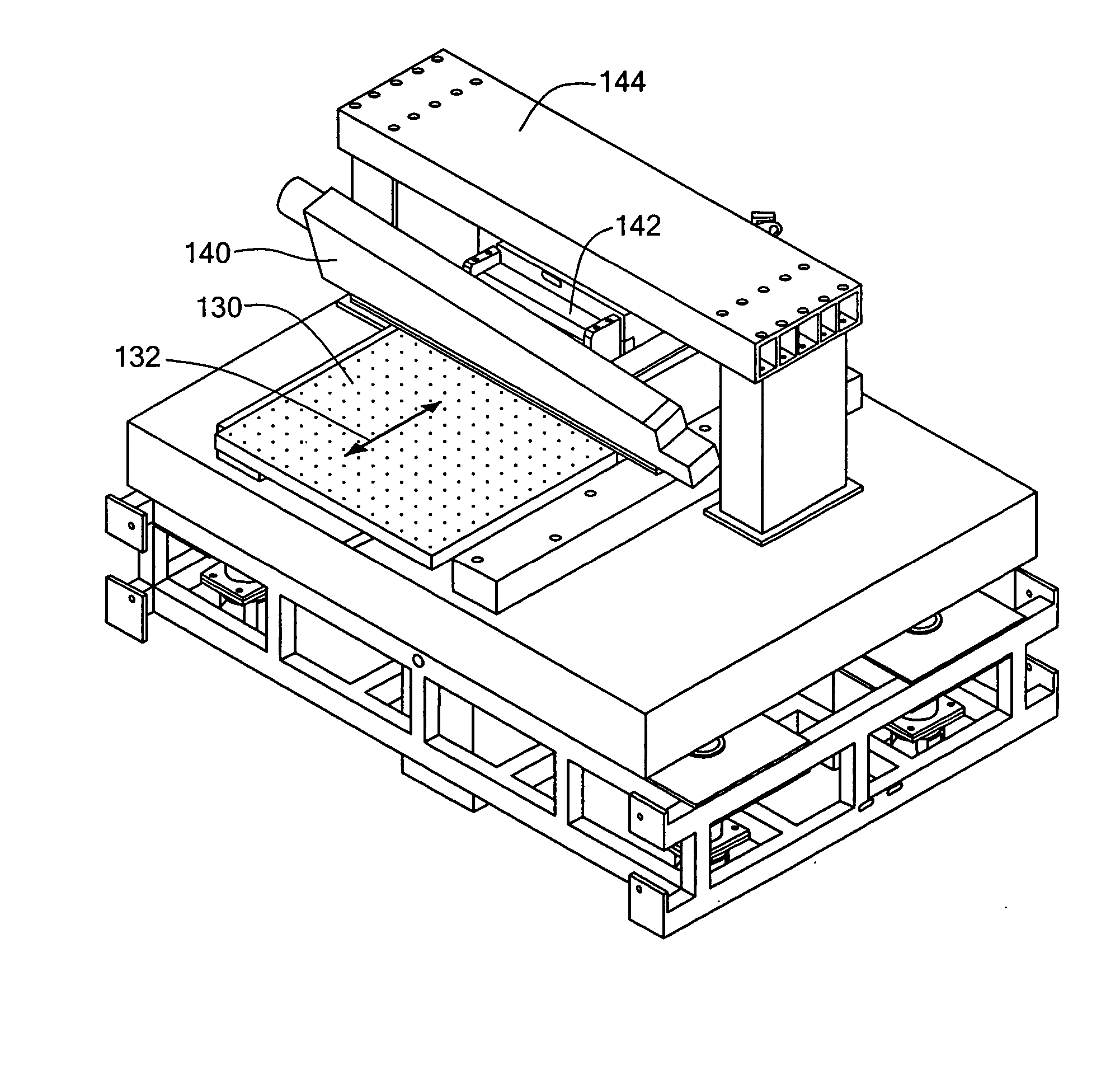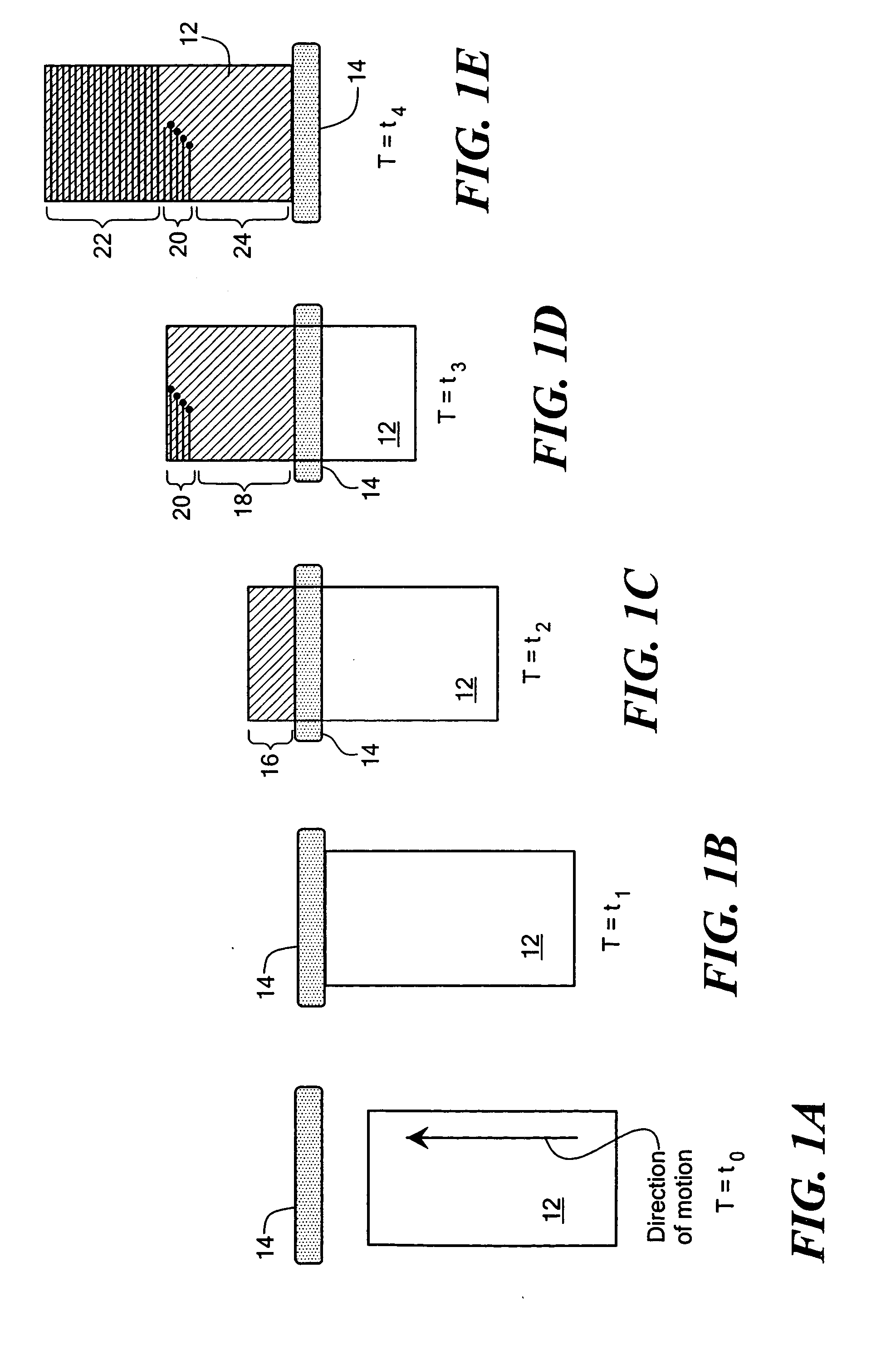Integrated, in-line bumping and exposure system
a technology applied in the field of in-line bumping and exposure system, can solve the problems of excessive oxygen diffusion back into the top layer of the resin, distribution of oxygen-contaminated components, and waste of “pre-exposure” laser beams
- Summary
- Abstract
- Description
- Claims
- Application Information
AI Technical Summary
Benefits of technology
Problems solved by technology
Method used
Image
Examples
Embodiment Construction
[0044] Aside from the preferred embodiment or embodiments disclosed below, this invention is capable of other embodiments and of being practiced or being carried out in various ways. Thus, it is to be understood that the invention is not limited in its application to the details of construction and the arrangements of components set forth in the following description or illustrated in the drawings.
[0045] In accordance with one method of and system for the subject invention, printing plate 12, FIG. 1A, such as a flexographic plate with a photosensitive top layer is bumped by producing a band of illumination 14 across the top layer to consume any dissolved oxygen within the top photosensitive layer. Band of illumination 14 is preferably ultraviolet or near ultraviolet radiation in the range of 244-436 nm, depending upon the absorption characteristics of the resin and is produced by an ultraviolet or near ultraviolet lamp or an array of ultraviolet or near ultraviolet producing LEDs a...
PUM
| Property | Measurement | Unit |
|---|---|---|
| wavelength | aaaaa | aaaaa |
| wavelength | aaaaa | aaaaa |
| wave length | aaaaa | aaaaa |
Abstract
Description
Claims
Application Information
 Login to View More
Login to View More - R&D
- Intellectual Property
- Life Sciences
- Materials
- Tech Scout
- Unparalleled Data Quality
- Higher Quality Content
- 60% Fewer Hallucinations
Browse by: Latest US Patents, China's latest patents, Technical Efficacy Thesaurus, Application Domain, Technology Topic, Popular Technical Reports.
© 2025 PatSnap. All rights reserved.Legal|Privacy policy|Modern Slavery Act Transparency Statement|Sitemap|About US| Contact US: help@patsnap.com



